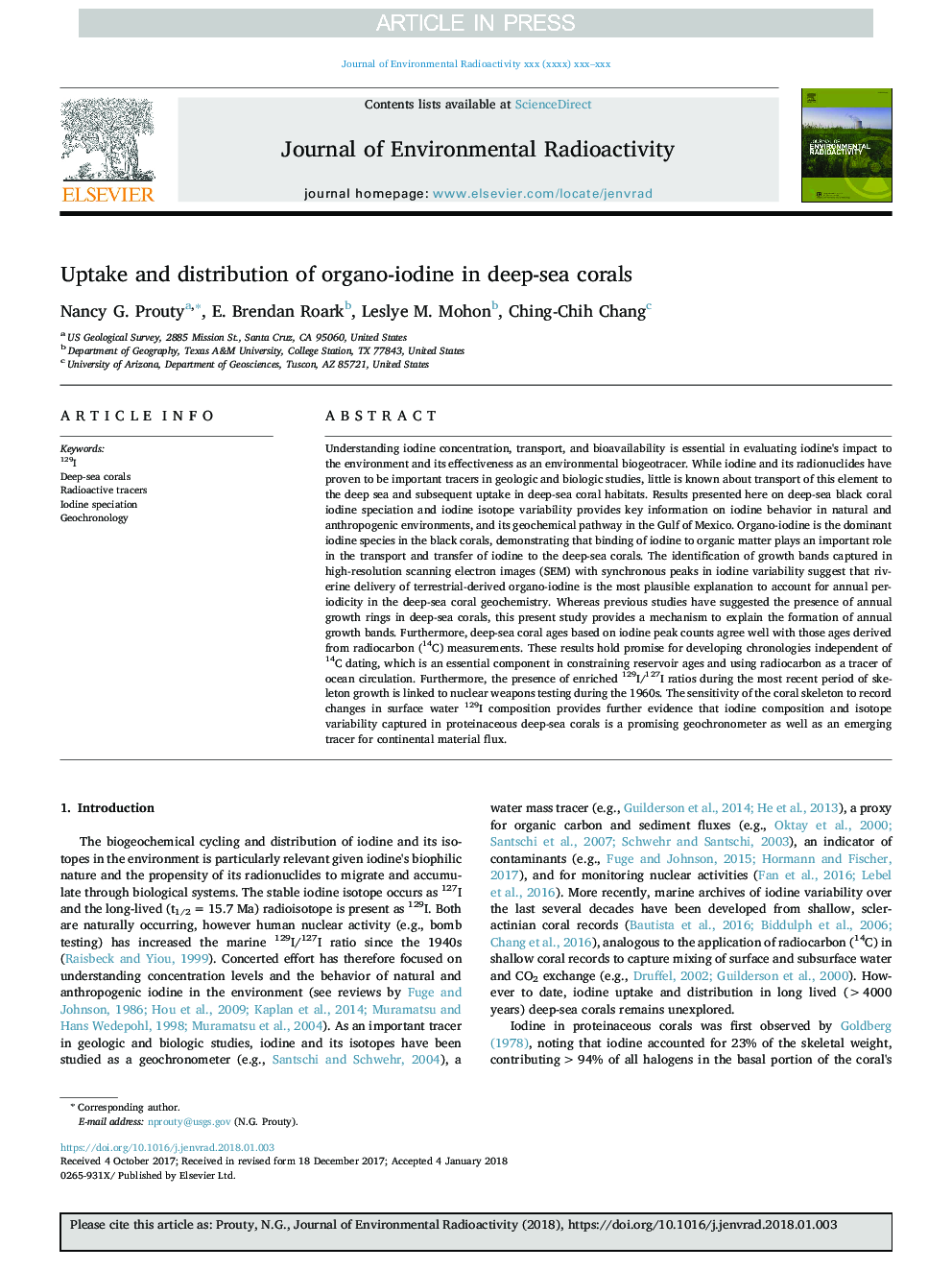| کد مقاله | کد نشریه | سال انتشار | مقاله انگلیسی | نسخه تمام متن |
|---|---|---|---|---|
| 8080619 | 1521555 | 2018 | 11 صفحه PDF | دانلود رایگان |
عنوان انگلیسی مقاله ISI
Uptake and distribution of organo-iodine in deep-sea corals
ترجمه فارسی عنوان
جذب و توزیع اورانژ در مرجانهای دریای عمیق
دانلود مقاله + سفارش ترجمه
دانلود مقاله ISI انگلیسی
رایگان برای ایرانیان
کلمات کلیدی
موضوعات مرتبط
مهندسی و علوم پایه
مهندسی انرژی
انرژی هسته ای و مهندسی
چکیده انگلیسی
Understanding iodine concentration, transport, and bioavailability is essential in evaluating iodine's impact to the environment and its effectiveness as an environmental biogeotracer. While iodine and its radionuclides have proven to be important tracers in geologic and biologic studies, little is known about transport of this element to the deep sea and subsequent uptake in deep-sea coral habitats. Results presented here on deep-sea black coral iodine speciation and iodine isotope variability provides key information on iodine behavior in natural and anthropogenic environments, and its geochemical pathway in the Gulf of Mexico. Organo-iodine is the dominant iodine species in the black corals, demonstrating that binding of iodine to organic matter plays an important role in the transport and transfer of iodine to the deep-sea corals. The identification of growth bands captured in high-resolution scanning electron images (SEM) with synchronous peaks in iodine variability suggest that riverine delivery of terrestrial-derived organo-iodine is the most plausible explanation to account for annual periodicity in the deep-sea coral geochemistry. Whereas previous studies have suggested the presence of annual growth rings in deep-sea corals, this present study provides a mechanism to explain the formation of annual growth bands. Furthermore, deep-sea coral ages based on iodine peak counts agree well with those ages derived from radiocarbon (14C) measurements. These results hold promise for developing chronologies independent of 14C dating, which is an essential component in constraining reservoir ages and using radiocarbon as a tracer of ocean circulation. Furthermore, the presence of enriched 129I/127I ratios during the most recent period of skeleton growth is linked to nuclear weapons testing during the 1960s. The sensitivity of the coral skeleton to record changes in surface water 129I composition provides further evidence that iodine composition and isotope variability captured in proteinaceous deep-sea corals is a promising geochronometer as well as an emerging tracer for continental material flux.
ناشر
Database: Elsevier - ScienceDirect (ساینس دایرکت)
Journal: Journal of Environmental Radioactivity - Volume 187, July 2018, Pages 122-132
Journal: Journal of Environmental Radioactivity - Volume 187, July 2018, Pages 122-132
نویسندگان
Nancy G. Prouty, E. Brendan Roark, Leslye M. Mohon, Ching-Chih Chang,
